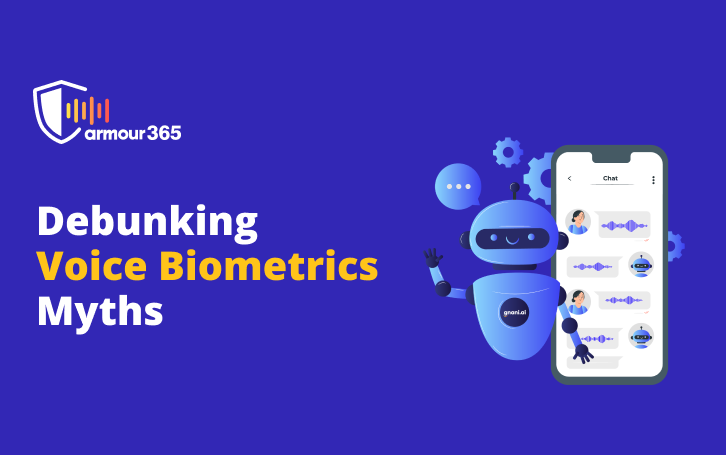
The need to protect data and implement powerful fraud detection and preventive measures in the form of voice biometrics (VB) hasn’t seen as much enthusiasm as expected. It can be attributed to the fact that there are several myths propounded by others regarding its efficacy, stability, and privacy protection capabilities.
In this article, we will debunk some of the myths surrounding voice biometrics.
Myth #1 Cybercriminals can trick Voice Biometrics systems
VB creates a voiceprint by analyzing 100+ characteristics. They include the form and frequencies of the sound waves produced by vocal cord vibrations, tone, inflection, and even pronunciation. VB cannot be fooled by simply imitating the sound of your voice. The technology can even pick up background noise that is produced when a recording of someone’s voice is played.
Tricking the VB system is not possible unless cybercriminals can reproduce all the other characteristics. Even if it manages to reproduce them, VB technology will still be able to figure out whether the voice is synthetic, recorded, or live.
Myth #2 Low accuracy rates
While no method is without its shortcomings, you can also adjust the accuracy range based on your organization’s needs. It has the ability to identify synthetic voice and the human voice. When used with another authentication method such as a PIN code or a password, the accuracy that Voice Biometrics offers is much more higher.
ID R&D’s latest report says that Voice Biometrics’s accuracy is increasing. They say it has a 0.01 percent false acceptance rate and a false rejection rate (FRR) of 5%.
Myth #3 Hackers can gain access to your voiceprint
Hackers can gain access to almost all forms of identification, such as finger identification, PINs, passwords, facial recognition, or voice biometrics. The advantage of Voice Biometrics, when compared with other forms of authentication, is that it has the ability to detect if the incoming voice is live speech or recorded.
Voice biometrics myth #4 It is not affordable
The truth is that you can find a highly-rated voice biometrics solution at a reasonable implementation cost. This is possible because of innovations such as low and no-code technology. Since voice biometrics pricing is usually calculated per validation, it is easy to find out the ROI so that you don’t overshoot your budget.
Voice biometrics myth #5 You cannot change your password
Speech authentication is not a static biometric credential. It keeps evolving. Just to give you an idea, fingerprints have a maximum of ten possible credentials, while the iris has only two. The number of credentials for voice biometrics has no limits, and that’s what makes it a powerful authentication tool.
Myth #6 “I can’t access if I have a cold or if my voice sounds different.”
It is a common fear among users that they will not be able to access systems using Voice Biometrics if their voice is lost due to sickness. Do remember that the biggest advantage of voice biometrics is that it captures every single aspect of your voice to create a voiceprint. So, even if you have a cold, you will still be authenticated.
Myth #7 Voice Biometrics is language-dependent
Unlike voice recognition technology, voice biometrics analyzes who is speaking rather than figuring out what is being spoken. Voice Biometrics technology is language-independent; therefore, it doesn’t matter which language the individual is speaking, nor does it care about their accent. It detects the unique biological characteristics of the individual’s speech and not the words that they use.
If the voiceprint of the individual is made in English, and the user calls back to talk to an agent in Spanish, the voice biometrics technology will still recognize them.
Wrapping up:
The ground reality is that voice biometrics is exceptionally efficient and is slowly picking up pace in terms of adoption despite the bumpy ride so far. Even for those who are not comfortable with using modern technology, voice biometrics can be easy to use as they can get authenticated in what will seem like a normal conversation.
Would you like to offer your customers a seamless authentication process? armour365™ proprietary AI-powered voice biometrics tool can be used in IVR, Whatsapp, and on your website. Get on a call with us to understand how our voice biometrics can help with user authentication.




